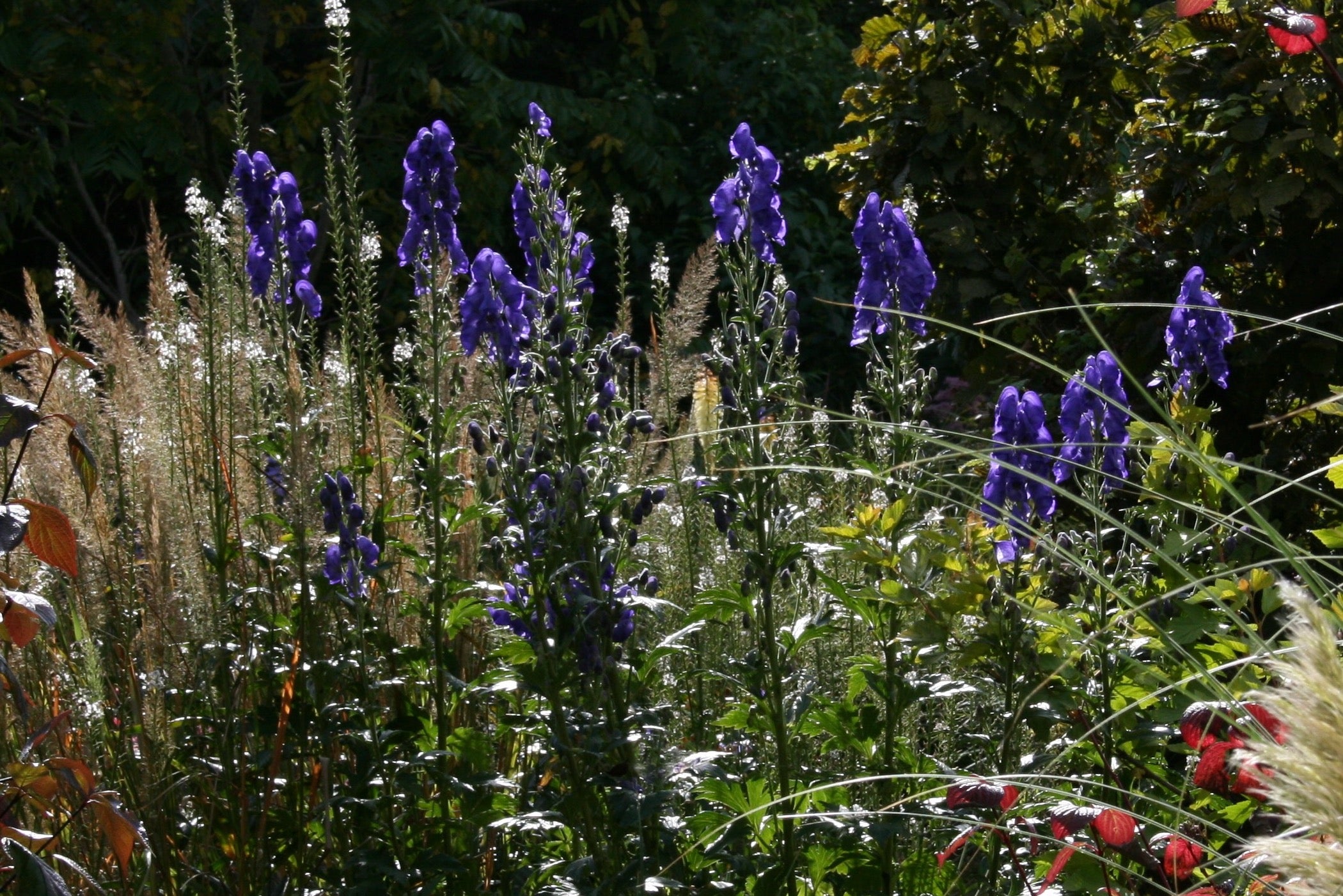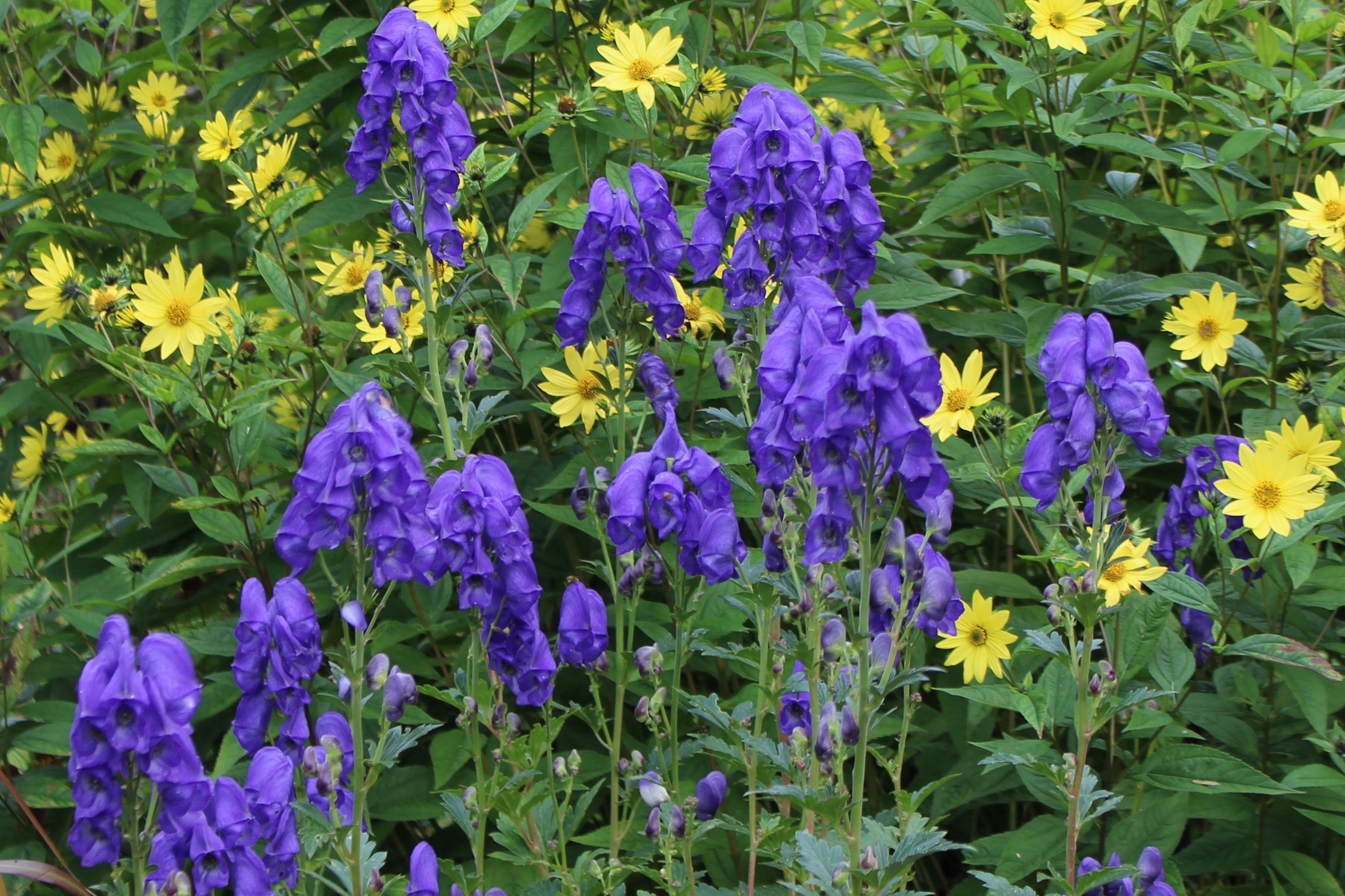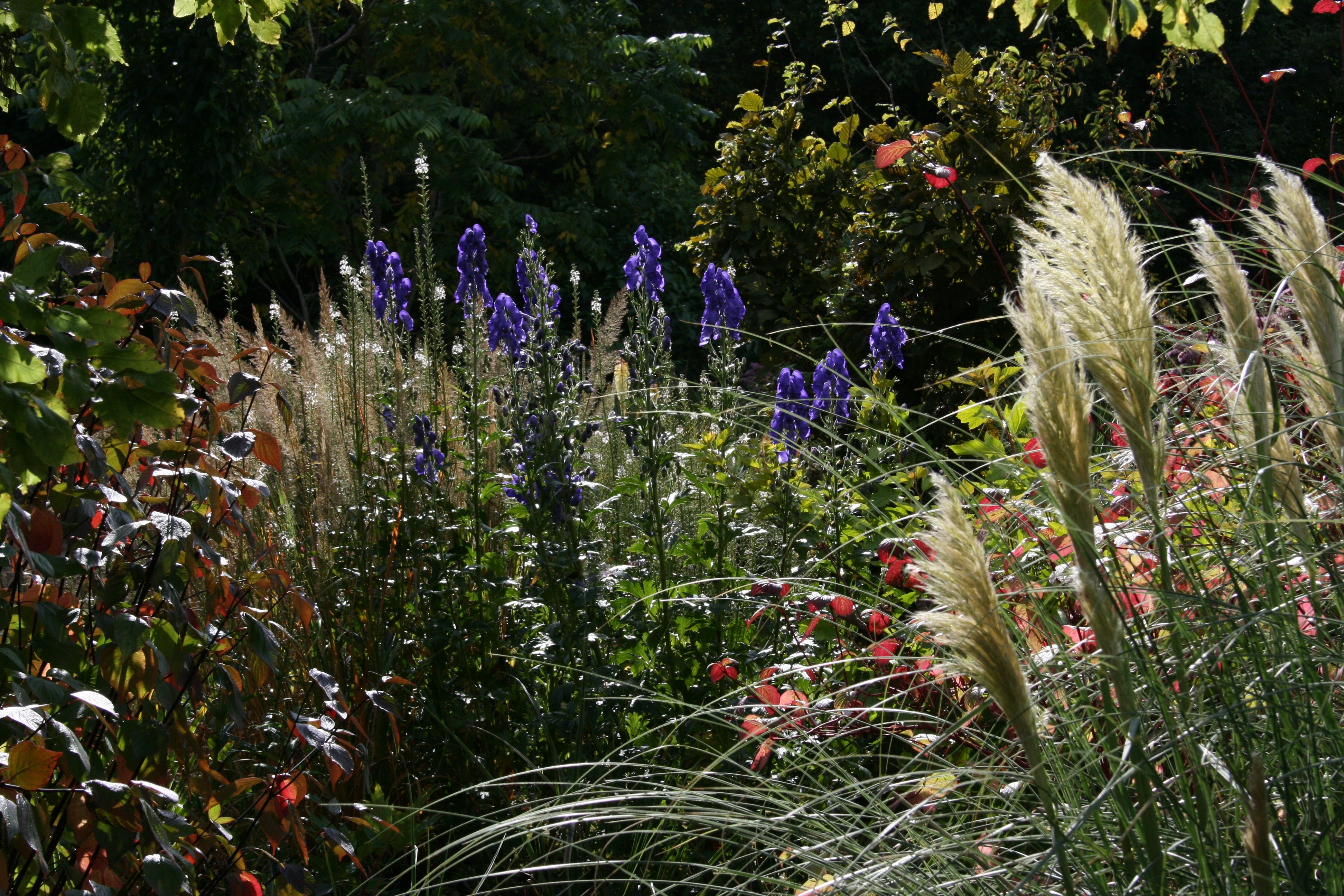Aconitum carmichaelii (Wilsonii Group) 'Barker's Variety'
Approx. 0.5 litre pot
About this cultivar:
Aconitum carmichaelii (Wilsonii Group) 'Barker's Variety' produces lots and lots of soft blue flowers and is quite tall. Carmichaelii is named after the plant hunter Captain Dugald Carmichael (1772–1827). Like most carmichaelii it will tend to flower later in the year.
Raised by J. Barker, credited with raising the first double Aconitums in the 1930s, who was from Kelmscott near Ipswich. But I can't find it on any map!
- Position: Full sun, partial shade (better in partial shade)
- Soil: Almost any soil (that is not too dry) - grows well in Ballyrobert!
-
Flowers: July, August, September, October
- Other features: -
- Hardiness: H7 - Hardy in the severest European continental climates (< -20°C), Fully hardy - grows well in Ballyrobert!
- Habit: Columnar or Upright
- Foliage: Deciduous
- Height: 120 to 180 cm (4 - 6 ft)
- Spread: 60 to 90 cm (2 - 3 ft)
- Time to full growth: 2 to 5 years
- Plant type: Herbaceous Perennial
- Colour: Blue, green
- Goes well with: Cirsium rivulare 'Atropurpureum', Geranium 'Rozanne', most kinds of woodland plants - nice in partial shade under a tree, Monarda. Experiment with grasses!
About this genus:
Aconitum is an erect, tuberous-rooted perennial that features dense panicles of hooded flowers atop rigid, leafy stems. The upper sepal of each flower develops into a large, helmet-like structure that somewhat resembles the hood worn by medieval monks, hence the common names of monkshood and helmet flower. Leathery, dark green leaves are deeply divided into 3-5 lobes. All parts of the plant (especially the roots and seeds) are extremely poisonous - so watch out!Aconitum carmichaelii (which used to be known as Aconitum fischeri) is a species of monkshood sometimes called autumn-flowering monkshood because of its late summer to early autumn bloom. It blooms later than most other species of Aconitum. Aconitum napellus blooms mid-summer and is supposed to be native to Europe (but probably isn't since most Aconitum are found in Asia). The x cammarum cultivars of Aconitum have bi-colour flowers and also bloom in midsummer.
Most Aconitum prefer part shade. However you can try growing them in very shady areas or full sun as long as it is not too dry. They are often put near woodland type borders or perennial borders - however you can be bold and try them with some tall grasses!








